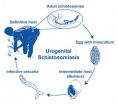(Press-News.org) NEW HYDE PARK, NY – A recent study by investigators from LIJ Medical Center demonstrated that using magnetic resonance imaging (MRI) in men with an elevated prostate specific antigen (PSA) resulted in a prostate cancer detection rate that was twice as high as data reported in the March 1999 Prostate journal that analyzed men undergoing the standard 12-core biopsy with an elevated PSA. Physicians in the recent trial used a targeted approach to evaluate prostate cancer that combines MR imaging and transrectal ultrasound fusion guided prostate biopsy.
Given the limitations of the PSA blood test and the standard 12-core ultrasound biopsies for detecting prostate cancer, researchers evaluated the initial 105 men eligible for the clinical trial using a new targeted prostate fusion biopsy method. The study, which will appear in the June issue of the Journal of Urology, showed that prostate cancer was detected in 62 percent of men tested in the latest trial vs. 30 percent in the general population as reported in the 1999 Prostate journal.
"The results of the phase III clinical trial show that a target fusion biopsy detects more clinically significant prostate cancer," said Art Rastinehad, DO, principal investigator of the study and director of interventonal urologic oncology at North Shore-LIJ's Arthur Smith Institute for Urology, in New Hyde Park, NY. "This is the type of cancer that patients may benefit from treatment compared to other patients with low grade and low volume prostate cancer."
Investigators used the UroNav system, which combines MRI and ultrasound imaging to better identify areas not revealed by the standard, 12-core biopsy procedure. A field generator, similar to a GPS device, is placed over the patient's hip to guide the biopsy. The MRI and ultrasound images are overlaid in real-time, which provide an evaluation of 100 percent of the prostate gland to get the most accurate diagnosis possible.
"The study also showed that in situations when the 12-core biopsy did not detect cancer, the fusion biopsy detected cancer in 15 percent of cases and in these cases, 85 percent were clinically significant," Dr. Rastinehad said.
Dr. Rastinehad credits the quality of the multiparametric prostate MR imaging as one of the key factors in the outcomes of the study, which resulted in excellent prostate cancer detection rates as compared to data from other institutions using the fusion biopsy technology.
"The MRI creates the road map to target specific areas within the prostate," Dr Rastinehad said. "Some patients with previous multiple negative prostate biopsies have cancer outside the usual areas sampled on the standard biopsy so the new technology takes away the mystery of a diagnosis."
Dr. Rastinehad noted the challenge in the study was trying to reproduce the high quality MRI results the National Institutes of Health has established, extending thanks for researches there for assistance in LIJ's research.
"Our study results are very promising," Dr. Rastinehad. "There is no question that a targeted approach will yield more cancer and actually more clinical significant cancer. Our next challenge is to perform a randonmized control trial to see if MR imaging for screening combined with a fusion biopsy can be applied to the broader patient population."
INFORMATION:
To view the abstract: "Improving Detection of Clinically Significant Prostate Cancer: Magnetic Resonance Imaging/Transrectal Ultrasound Fusion Guided Prostate Biopsy."
A copy of the study is available is available on request.
Acknowledgements: Invivo provided research equipment. NIH Molecular Imaging Program, Urological Oncology Branch and Center for Image Guided Oncology assisted with initial program support.
Phase III clinical trial shows image fusion-guided biopsy significantly improves accuracy of prostate
2014-05-21
ELSE PRESS RELEASES FROM THIS DATE:
Carnegie Mellon, Microsoft Research automate privacy compliance for big data systems
2014-05-21
PITTSBURGH—Web services companies, such as Facebook, Google and Microsoft, all make promises about how they will use personal information they gather. But ensuring that millions of lines of code in their systems operate in ways consistent with privacy promises is labor-intensive and difficult. A team from Carnegie Mellon University and Microsoft Research, however, has shown these compliance checks can be automated.
The researchers developed a prototype automated system that is now running on the data analytics pipeline of Bing, Microsoft's search engine. According to ...
Funny River Fire, Alaska
2014-05-21
According to the Alaskan Division of Forestry the Funny River fire was very active overnight (May 20) because of low humidity. Currently the fire is estimated to be near 7,000 acres and has reached Tustumena Lake. It is spreading east and west along the shore, is 10 miles long, and is about a mile wide with broadening at the lake shore. There have been no evacuations or reports of any structures lost.
Early this morning (May 21), flame lengths of 125 feet with erratic fire behavior were reported. Winds for today are forecasted to remain out of the north keeping the fire ...
A faster track to the tools that track disease
2014-05-21
Radioactivity is usually associated with nuclear fallout or comic-book spider bites, but in very small amounts it can be a useful tool for diagnosing diseases.
Small molecules containing a radioactive isotope of fluorine called "18F radiotracers" are used to detect and track certain diseases in patients. Once injected into the body, these molecules accumulate in specific targets, such as tumors, and can be visualized by their radioactive tag on a positron emission tomography (PET) scan. The 18F tags quickly decay so no radioactivity remains after about a day.
But there ...
PMS may spell menopause symptoms later -- but not hot flashes
2014-05-21
CLEVELAND, Ohio (May 21, 2014)—Having premenstrual syndrome (PMS) before menopause does not mean women will be troubled by hot flashes afterward. But they may face more menopause complaints other than hot flashes, such as trouble with memory and concentration, finds a new study published online in Menopause, the journal of The North American Menopause Society (NAMS).
The research team at the Helsinki University Central Hospital and Folkhälsan Research Institute in Helsinki, Finland, are the first to show a link between PMS and a worse quality of life after menopause. They ...
Scientist uncovers links connecting environmental changes with spike in infectious disease
2014-05-21
National Museum of Natural History scientist Bert Van Bocxlaer and an international team of researchers revealed that anthropogenic changes in Africa's Lake Malaŵi are a driving force behind the increase of urogenital schistosomiasis, a debilitating tropical disease caused by parasitic flatworms. Scientists estimate that 250 million people are affected by schistosomiasis worldwide, and 600 million more are at risk of contracting it. In some villages along the shorelines of Lake Malaŵi, 73 percent of the people and up to 94 percent of the schoolchildren are infected ...
Scaly gem discovered in South American cloudforests
2014-05-21
Field and laboratory work by Omar Torres-Carvajal from Museo de Zoología QCAZ, Pontificia Universidad Católica del Ecuador, and his former undergraduate student Simón Lobos has resulted in the discovery of a gem-looking new species of shade lizard from the cloudforests in northwestern Ecuador. This region is part of the 274,597 km2 Tumbes-Chocó-Magdalena hotspot that lies west of the Andes. The study was published in the open access journal ZooKeys.
Shade lizards (genus Alopoglossus) are widely distributed across tropical South America. They differ from most other lizards ...
Shattering past of the 'island of glass'
2014-05-21
A tiny Mediterranean island visited by the likes of Madonna, Sting, Julia Roberts and Sharon Stone is now the focus of a ground-breaking study by University of Leicester geologists.
Pantelleria, a little-known island between Sicily and Tunisia, is a volcano with a remarkable past: 45 thousand years ago, the entire island was covered in a searing-hot layer of green glass.
Volcanologists Drs Mike Branney, Rebecca Williams and colleagues at the University of Leicester Department of Geology have been uncovering previously unknown facts about the island's physical history.
And ...
The interruption of biological rhythms during chemotherapy worsen its side effects
2014-05-21
Patients receiving chemical treatment for cancer often suffer fatigue and body weight loss, two of the most worrying effects of this therapy linked to the alteration of their circadian rhythms.
The circadian system, better known as our biological clock, is responsible for coordinating all the processes that take place in our organism.
If it does not function correctly, what is known as a circadian disruption or chronodisruption, has for years been linked to an increased incidence of cancer, obesity, diabetes, depression, cognitive problems or cardiovascular diseases.
"Also, ...
New tide gauge uses GPS signals to measure sea level change
2014-05-21
A new way of measuring sea level using satellite navigation system signals, for instance GPS, has been implemented by scientists at Chalmers University of Technology in Sweden. Sea level and its variation can easily be monitored using existing coastal GPS stations, the scientists have shown.
Measuring sea level is an increasingly important part of climate research, and a rising mean sea level is one of the most tangible consequences of climate change. Researchers at Chalmers University of Technology have studied new ways of measuring sea level that could become important ...
Dam removal improves shad spawning grounds, may boost survival rate
2014-05-21
Research from North Carolina State University finds that dam removal improves spawning grounds for American shad and seems likely to improve survival rates for adult fish, juveniles and eggs – but for different reasons.
The researchers focused on a small tributary in North Carolina called the Little River, where three dams were removed in the late 1990s and early 2000s. American shad (Alosa sapidissima) spend the bulk of their adult lives in saltwater, but return to freshwater rivers like this one to spawn. While in these freshwater environments, the adult shad do not ...






